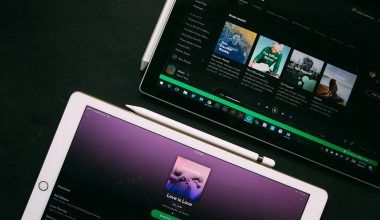Have you ever wondered how to monetize your video on all digital stores and turn your creativity into consistent income? With the ever-growing popularity of digital platforms, monetizing videos has become one of the best ways for creators to earn. Whether you’re an independent artist, filmmaker, or content creator, the process might seem overwhelming at first, but it’s actually straightforward when broken into steps. This blog will walk you through each phase in simple terms, ensuring you can start earning from your videos with ease.
What Does It Mean to Monetize Your Video on Digital Stores?
Monetizing your video on digital stores means making your content available for sale, rent, or ad-based earnings on platforms like YouTube, Apple Music, Amazon Prime, or Vimeo. It allows creators to earn revenue whenever someone views, purchases, or subscribes to your content. By leveraging these stores, you expand your reach to a global audience while generating passive income.
Step 1: Preparing Your Video for Monetization
The first step is to ensure your video meets the technical and content requirements for digital stores.
- Optimize Video Quality
High-quality videos perform better on digital platforms. Use at least Full HD resolution (1920×1080) and ensure proper sound mixing. - Create Engaging Content
Stores prioritize content that keeps viewers engaged. Focus on storytelling, visuals, and clarity. - Check for Copyright Issues
Use only original or licensed music, visuals, and scripts to avoid copyright strikes. - Add Captions or Subtitles
Subtitles make your content accessible to a broader audience, including non-native speakers or those with hearing impairments.
Step 2: Choosing the Right Digital Stores
Not all digital platforms are the same, so it’s essential to identify the right stores based on your content type and target audience.
- YouTube
Ideal for ad-based revenue. Upload your videos, enable monetization, and earn from ad placements. - Apple Music and iTunes
Best for artists or filmmakers. You can sell your videos as downloads or rentals. - Amazon Prime Video
Offers rental, purchase, or ad-supported monetization for feature-length films and series. - Vimeo OTT
Great for subscription-based content. Creators can build a personalized video store.
Step 3: Setting Up an Account on the Platform
To monetize your video, you need to create a verified account on the digital store of your choice.
- Sign Up or Log In
Create an account and provide the necessary personal or business details. - Complete Verification
Upload identification documents or business credentials to verify your account. - Connect Payment Methods
Add your bank details or connect a PayPal account to receive earnings. - Choose Monetization Model
Decide whether you want to earn through ads, rentals, subscriptions, or direct sales.
Step 4: Uploading and Optimizing Your Video
After setting up your account, the next step is uploading your video. Make sure it is optimized for search and discoverability.
- Video Titles and Descriptions
Use a catchy title and detailed description with relevant keywords, including “monetize your video.” - Thumbnails
Design an eye-catching thumbnail that represents your video content. - Metadata
Add tags, categories, and genres to help digital stores recommend your video to the right audience. - Video Formats
Ensure the file format (MP4, MOV) and size meet the platform’s guidelines.
Step 5: Setting Pricing and Revenue Sharing
Digital stores often provide flexible pricing models. Choose what works best for your content and audience.
- Free with Ads
Earn from ad views. Platforms like YouTube use this model. - Pay-Per-View or Rent
Set a rental price for temporary access to your content. - Subscription-Based
Create exclusive content for paying subscribers. - Direct Sales
Allow viewers to purchase your videos for unlimited access.
Step 6: Promoting Your Monetized Video
Monetization doesn’t stop after uploading. Promotion is key to reaching viewers and increasing earnings.
- Leverage Social Media
Share clips or trailers on Instagram, Facebook, and Twitter to drive traffic. - Collaborate with Influencers
Partner with influencers or creators to broaden your reach. - Email Marketing
Send newsletters to your existing followers with direct links to your videos. - Use SEO Strategies
Optimize your video titles, descriptions, and tags for search engines to increase visibility.
Step 7: Tracking and Improving Performance
Once your video is live, monitor its performance and refine your strategy.
- Analytics Tools
Use built-in analytics on digital stores to track views, earnings, and audience demographics. - Feedback
Listen to viewer comments and reviews to identify areas for improvement. - Experiment
Test different pricing models, content styles, and promotion methods to maximize revenue.
Step 8: Expanding to Multiple Platforms
To truly maximize earnings, distribute your video across multiple digital stores.
- Use a Video Distribution Service
Services like TuneCore, CD Baby, or DistroKid can distribute your content to various platforms. - Adapt Content for Each Platform
Tailor your video length, format, and promotional strategies based on the store’s audience preferences.
Conclusion
Monetizing your video on all digital stores might sound like a big task, but by following these steps, you can simplify the process and start earning from your creative efforts. From optimizing your video to choosing the right platform and promoting it effectively, every step is crucial in ensuring your success. Remember, the key is consistency and learning as you go. So, take the first step today and monetize your video on all digital stores to unlock your earning potential.
For further reading, explore these related articles:
For additional resources on music marketing and distribution, visit Deliver My Tune.






